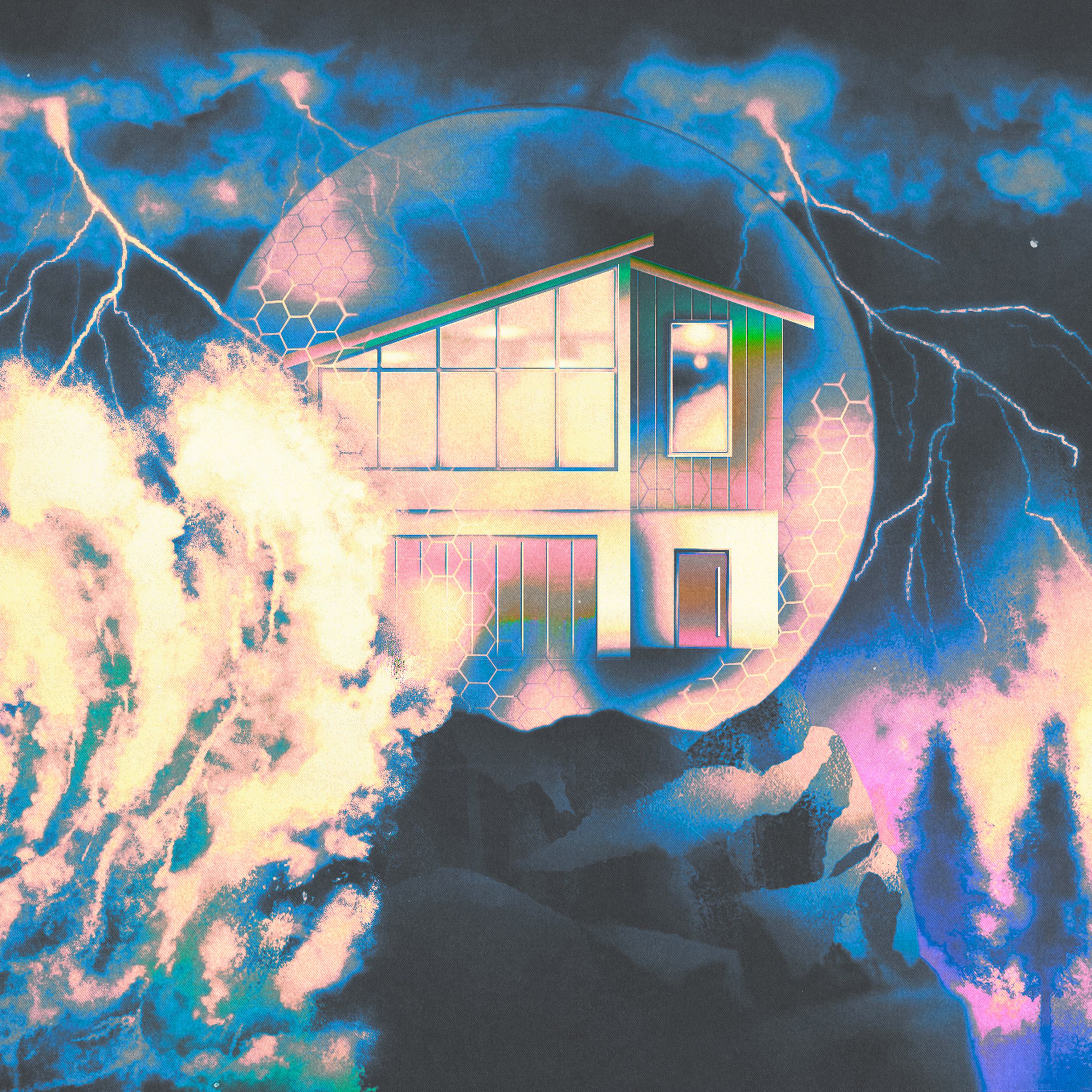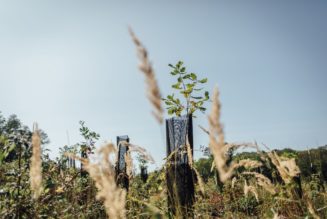The effort to climate-proof our housing is running into a mess of problems, including aging housing stock, out-of-date zoning laws, and NIMBY-ism. Can we build our way to a better future?
Share this story

When it comes to the American dream, home ownership looms large.
“It’s that weird combination of stability and security,” Carlos Martín, the project director for the Remodeling Futures Program at the Joint Center for Housing Studies of Harvard University, said. “We have a very unique way of thinking about housing. It is associated with a lot of our cultural imagery in this country, as well as our financial situation.”
As the frequency and devastation of disasters increase, we’re starting to realize how infrastructure, climate, and longtime institutions interconnect. And as the climate changes, our housing is uniquely vulnerable.
As the world emerges from a record year for climate disasters, damages have reached a new peak. This year, there were 24 disasters that each incurred more than $1 billion in damages, claiming 250 lives and displacing hundreds of thousands of others to shelters and temporary housing.
“The reality is that people have been going through disasters since time immemorial, but now the frequency with which we’re going through them and the severity of damages is becoming more disconcerting,” Martín said.
While there are a number of cutting-edge designs as well as building and retrofitting techniques that can be used to make our homes more climate-resilient and prevent such disasters from taking a massive toll, it’s going to take a lot of time and money to protect US housing stock and do it without forcing the most vulnerable populations to live in disaster-prone areas.
There are around 144 million homes in the US (as of 2022), according to the latest data from the 2021 American Community Survey, built mainly along the coasts and in areas prone to flooding, hurricanes, and wildfires as the climate changes. Around 85 million of those are owner-occupied. Slightly less than half were built before 1980, and roughly 35 percent were built before 1970, according to the National Association of Home Builders. Only 8.3 million new units of housing were added from 2010 to 2021.
Austin Trautman, the founder of Vali Homes in Phoenix, Arizona, notes that as homebuilding technology has changed and building codes have evolved to meet energy and efficiency codes, we’ve come to discover that there are several problems with our housing.
“Spray foam would be the most egregious example all across the board,” Trautman said. “It doesn’t insulate in the way that you’d hope it would. It reduces resiliency of most buildings, increases mold growth, plus from a carbon standpoint, you’re putting huge amounts of carbon into a home, upfront.”
“The majority of housing in the United States is going to experience at least climate-related hazard in some way or another,” Martín said, noting that these could present as acute incidences, like hurricanes and wildfires, or chronic events, like an extended heatwave or drought. “It’s going to mean we have to start thinking much more about not just building a generic house that we think of historically in this country,” he continued.
Housing is highly place-specific and must be built or retrofitted to meet each area’s climate dangers. Martín points out that we only build about 1 million new houses each year, and they’re only as resilient as the most recent building codes. He notes that building to code only means building to a minimum requirement.
In many cities and towns, climate resiliency work is already underway.
Louisiana and Mississippi are fortifying their seawalls and levees to fight an encroaching saltwater wedge and improving their roofs. Californians are trying to harden their homes to fire. Martín says that, in many ways, we’re just “buying time” against the eventual impact of climate change on our homes. What’s worse is that climate disasters hit vulnerable populations especially hard. Climate change, housing, and social vulnerability are intimately linked.
The slow-rolling climate disaster has come to the doorsteps of climate-vulnerable areas like Florida and California, which also have some of the most expensive real estate in the country. This year, insurance companies like Allstate, State Farm, and Farmers Insurance have pulled out of states like Florida and California because climate-related disasters are getting worse and more expensive. That pullback will tremendously impact current and future housing — especially as the country grapples with the confluence of a number of significant factors.
Yet, it’s not all bad; innovators in building, construction, and materials are working hard to figure out how best to make our homes more climate-resilient, and even the government has stepped in to address the crisis. While plenty of unique-looking and sometimes outlandish concepts are publicized, many aren’t practical or even real and won’t see the light of day.
As headlines around the country documented how unbearably hot it was in places like the South and West, architects like Stephanie Halfen of SDH Studio in Miami, Florida, say they’re continuing to focus on passive design, orienting new homes to lower energy costs.
David Warner, the owner and CEO of Redhorse Constructors in California, leverages geothermal heating and cooling, traditional heat pumps, and specially glazed doors and windows in his builds to help make new homes more comfortable. He also uses things like rammed earth walls to help insulate a home from heat and cold.
Trautman of Vali Homes (a self-described “construction translator”) takes another approach and looks to nature and history for inspiration. As someone who loves the Sonoran Desert, he says he looks for clues as to how best to build in hot climates — and his company has taken cues from the saguaro cactus. They designed and built a home with a self-shading and self-ventilating shell (similar to what the saguaro uses) to keep the home comfortable in the desert heat.
Building and retrofitting homes to be more resilient to heat is relatively easy. However, creating homes that can withstand hurricane-force winds and frequent flooding is not.
While some unique ideas and innovations around storm and flood resistance exist, not all work. For example, the Float house was built in New Orleans’ Ninth Ward following the devastation of Hurricane Katrina as part of the “Make It Right” program. It is designed to float up to 12 feet above its foundation when flood waters rise. But since 2016, several mortgage holders of “Make It Right” homes have filed lawsuits against the organization, claiming that the homes were not built with humidity and rainy climates in mind. It turns out, some of the homes have started rotting and decaying.
Many hurricane-prone locations like those in Florida have already hardened their homes against massive storms and wind — a move that happened after Hurricane Andrew in 1992. Halfen says that one of the critical things she designs homes around are strong hurricane windows, doors, and roofs. While these innovations are not new, the Federal Emergency Management Agency, or FEMA, continues to redraw flood maps, and Halfen says it has significantly changed how high the finished floors of homes must be above the floodplain.
She also says that there is less green space for rainwater runoff because home footprints have become so much larger in Florida (lots are expensive, so people want to maximize their interior space). To prevent flooding after heavy rain, she designs catch basins and collection tanks so that the water can be reused for irrigation.
FEMA is the only agency that provides flood insurance for homes in floodplains, and they’re responsible for drawing flood maps. After a growing number of floods in places like California’s Central Valley and Vermont in the last year, maps have been redrawn, which, in some cases, as Martín points out, put many of the most vulnerable populations at risk of losing their housing.
To offset this, the Department of Housing and Urban Development (HUD) offers funds for areas to help retrofit or buy out housing impacted by climate change and flooding. The Disaster Recovery Buyout Program allows localities to buy commercial and residential properties in disaster-prone areas. The properties are then demolished to create park amenities, open spaces, or flood mitigation projects. Vermont is using funds to buy out homeowners who were flooded this summer.
While most land management professionals will tell you that wildfires are natural, the impact that they have on our homes is becoming more acute. “There have been over 200,000 wildfires nationwide since 2020, and from a homes and businesses and communities perspective, we simply need to learn how to live with fire,” according to Harry Statter, the founder of Frontline Wildfire Defense, a wildfire protection company that installs specialized sprinkler systems for homes and businesses in the West. Global climate change will increase the amount of dry plant fuel, which will increase the chance of wildfire.
The Frontline system uses a combination of machine vision, machine learning, and AI to spot and track wildfires via satellite and terrestrial cameras. Wildfire embers can travel as far as 24 miles and start a new fire, Statter says, and the Frontline system can be activated remotely to prevent homes from burning and help firefighters contain fire more quickly. Statter says that he currently has a little over 300 clients who use the system. Because major insurers have said they will stop covering homes in California due to wildfire, Statter says systems like Frontline are more critical than ever.
According to Warner at Redhorse Constructors, new fireproof materials are also coming on the market. He points to innovations like mycelium that can be grown into fire-resistant sheets, leather-like, fire-resistant materials made of plant material by a company called MycoWorks that can be used for upholstery, flame-retardant paint from companies like Flame Security International, and coatings for concrete that prevent it from exploding during fires.
As we transition to greener, more sustainable power, homes need upgrades that include everything from solar power to new, more efficient electrical panels and battery backups to store energy. While solar systems aren’t new, and the sector has had issues, experts still believe that solar-powered homes will continue to increase our climate resilience.
Warner says plenty of new home energy technologies are on the horizon. “We’re going to be toying with flywheel systems for energy storage, which are not lithium-based,” Warner said. “We’re going back to the old-school mechanical flywheels that NASA deploys on our satellite systems to make homes more efficient.”
He also noted that he’s built and designed homes that leverage solar warming for hot water and a new product called Span smart energy panels, electrical panels designed to allow customers to manage their energy throughout the day in their homes. Warner also mentioned that geothermal is becoming a more feasible energy source for homes with access.
Building new, ultra-luxury, climate-resistant homes with advanced technologies is much simpler than retrofitting aging housing and multifamily dwellings in underprivileged communities to survive the next big climate event. Martín argues that when climate disasters occur, the government often tells Indigenous and low-income people that they’re living in the wrong place.
“I think it’s completely disrespectful and, in some cases, racist, to say this is the wrong place,” he said, noting everything from housing costs to zoning, NIMBY-ism, and our housing institutions plays a significant role in preventing the US from creating equitable, climate-safe housing.
“We have a history in this country of not letting certain kinds of people buy time against climate change,” Martín says. “They’ve been forced to live in certain places, not of their own choosing.”
One of the largest structural issues is the cost of making homes in disaster-prone areas more climate-resistant. Those costs run high and frequently prevent those with lower incomes from being able to rebuild or retrofit their homes.
In Florida, for example, any reconstruction, rehabilitation, addition, or other improvement to a home that equals or exceeds 50 percent of the value of the structure before the start of construction is deemed a “substantial improvement.” Those improvements require the entire structure to be brought into compliance with the current code standards for everything from flood to hurricane resistance. In some cases, homes damaged by climate disasters in low-income areas are simply too expensive to rebuild. While HUD and FEMA have funds for such things, they frequently favor the rich.
Look at what’s happening in Fort Myers, Florida, an area largely devastated by Hurricane Ian in 2022. According to Bloomberg, wealthy homeowners have been rebuilding their homes, driving the gentrification of the beach town and forcing lifelong residents out.
Billy Grayson, the CIO of the Urban Land Institute, notes that “correctly pricing climate risks into the value of real estate will cause winners and losers.” It may decrease the value of some existing homes in highly vulnerable areas, and it could be good for those looking for affordable places to live in the short and medium term. But in the long term, it won’t be good for home values, he said.
“For the market as a whole, over the long term, getting this right is really important,” Grayson said. “And it will lead to better outcomes for both the financial industry, the home building and construction industry and for future homeowners and renters.”
There’s also the issue of zoning laws across the country. Most of America is only zoned for single-family homes. Yet housing advocates argue that to fight climate change, we need to consider ideas like the 15-minute city, complete with more dense multifamily living and access to all services within a 15-minute walking distance. The design would cut down on carbon emissions from transportation and make housing more affordable.
In terms of retrofitting homes to meet climate change, many zoning laws don’t recognize the difference between large and small homes. For example, in many places, a home with just 1,000 square feet is limited by the same rules that govern how many people can live in a 10,000-square-foot home. A number of zoning laws have also narrowly defined what constitutes a “family,” which highlights issues around racial and class segregation in housing.
A close relative of zoning issues is NIMBY-ism, which represents a push by residents of an area to prevent meaningful changes to a neighborhood. NIMBYs (which stands for “not in my backyard”) frequently fight against multifamily housing and often block the rebuilding of affordable homes after natural disasters.
This concept extends to established housing institutions that work against climate resiliency and equity. These include everything from Fannie Mae and Freddie Mac to government disaster assistance programs. Martín argues that we must completely rethink the American homeownership ideal to tackle the problem.
“We’re starting to see how all of these things interconnect,” he said. “When our housing institutions were created, we just had one focus: get people in a house, give people the leverage to get private sector financing to buy a home.”
He added, “Everything from builders to remodelers, appraisers, realtors to your tax assessor will be involved to solve the problem, and it’s going to cost a lot of money.”
In the face of these challenges, there is still some hope for an equitable and fair path toward climate-resilient housing for all.
“The best way for us all to buy time is to reduce future climate change,” Martín said. “So investments in climate mitigation and reducing our reliance on fossil fuels across the board is the number one best investment we can make.”
There hasn’t been enough research into housing resiliency because the focus has been on driving energy efficiency and energy reduction. Still, there’s reason to hope.
“What I envision happening isn’t a breakdown in housing, but transformation, and if it’s one thing Americans do, we pivot,” Martin said. “We can reinvent ourselves. We’ve been able to do it. So the question is, what does that look like that doesn’t revert to our previous issues around housing.”









